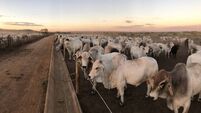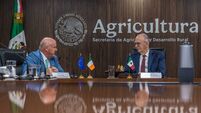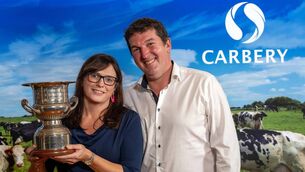We can learn from Welsh PGI system
It is as much about learning what not to do as about learning what you should be doing.
I recently took the opportunity for a learning look ‘over the ditch’, so to speak, to see what resources our Welsh neighbours are relying on.
I came across an organisation entitled Hybu Cig Cymru, which translates as the Welsh Meat Board, an industry-based organisation, funded primarily by levies, but also receiving support under the EU fund for rural development, which is responsible for the development, promotion and marketing of Welsh red meat.
One interesting project that HCC has worked on is the protected geographical indication (PGI) for Welsh lamb and Welsh beef. The ‘PGI’ accreditation is similar to trade marking, but on a regional rather than a product basis.
The best-known example is a bottle of sparkling wine, which can only be called Champagne if it comes from Champagne — otherwise, it is classed as sparkling white wine.
In Ireland, the only meat product that has secured this equivalent to a trademark is Connemara hill lamb. (Clare Island salmon; Imokilly regato; and Timoleague brown pudding are also EU-approved as regional specialities).
The Welsh have been quicker off the mark, and have effectively registered their entire beef-and-lamb produce with a protected geographical indication.
Another interesting project that the HCC are undertaking is a programme of genetic improvement for Welsh lamb and beef production. Funding at a rate of up to 50% of cost, worth £500 for AI or up to £700 for embryo transfer, is available under the EU-backed rural development plan for Wales. The funding is restricted to pedigree breeders in Wales, as the concept is that the genetic improvements for breeders will flow through to commercial farms.
Commercial farms are also able to access 50% funding for superior AI straws, capped at £500.
Another funding programme supported by HCC is financial support toward BVD testing, with up to £400 available for testing of up to 100 cattle.
These projects are interesting, and point the way towards schemes that can potentially be run in Ireland, possibly under our own rural development plan.
A second grouping of Welsh organisations (Farming Connect, Dairy Development Centre, and Dairyco) has useful resources, which will be of interest to Irish farmers.
For example, their publication, Top Energy Tips for Dairy Farmers, contains a huge range of ideas for saving energy. Although some of the ideas may already be in use, it’s still worthwhile having a comprehensive list, so you can check which ones are useful in your own circumstances.
The disparities between energy usages can be huge, with some farmers incurring electrical bills of twice their counterparts.
These three organisations have also come together to promote Milk Bench, an internet-based service that allows one dairy farmer to compare how his enterprise is doing compared to other farmers.
It is similar to the Teagasc profit monitor, and splits farm performance across overheads, labour, machinery, feed, herd health, and replacement and finance costs.
The service is independent and might be less vulnerable to temptations, say if a farmer wanted to skew the figures, with the Irish profit-monitor system.
Your questions on this, and other farming issues, are welcome.













